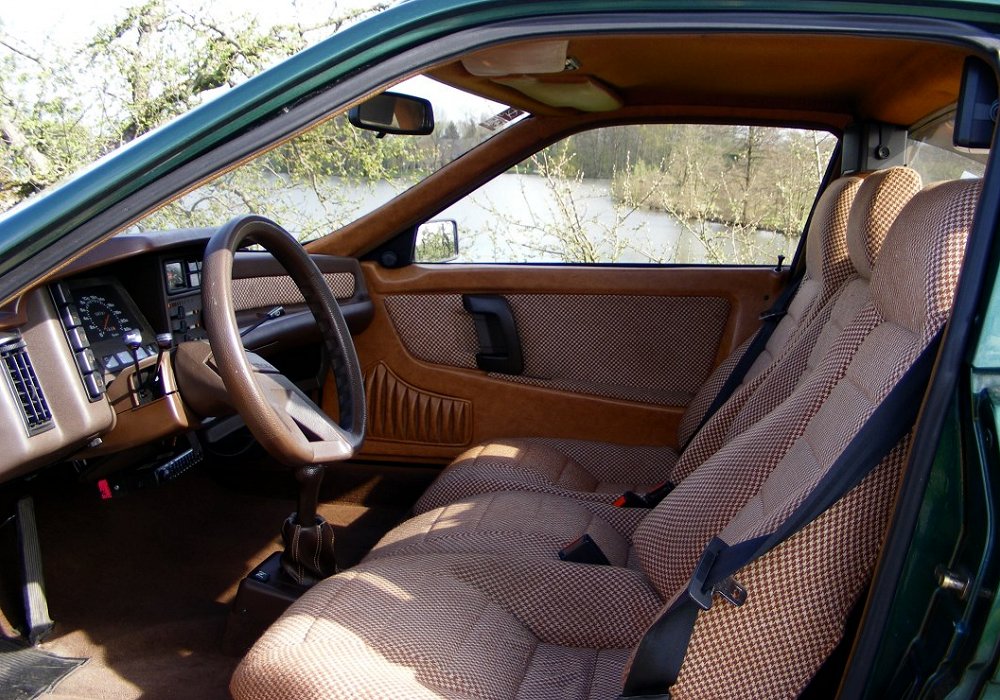Description
The Talbot-Matra Murena 1.6, introduced in 1980, was the entry-level version of Matra’s last true sports car and one of the most distinctive mid-engined coupés of its era. Replacing the Bagheera, the Murena refined every aspect of Matra’s unique approach to lightweight construction, aerodynamic efficiency and everyday usability. The 1.6 model offered the purest expression of that philosophy: light, agile, mechanically simple and designed to bring mid-engined driving to a broad audience. Although modestly powered, it delivered a balanced, engaging and remarkably modern driving experience wrapped in one of the cleanest, most aerodynamic shapes of the early 1980s.
The Murena 1.6 was built around Matra’s pressed-steel monocoque chassis, but unlike the Bagheera, the structure was heavily galvanised to prevent the rust issues that plagued earlier models. Onto this sturdy foundation Matra bonded large, lightweight polyester body panels, a technique the company had mastered over two decades. The result was a corrosion-resistant, rigid and aerodynamically efficient shell with a remarkably low drag coefficient for its time. The body’s wide stance, long fastback silhouette, sharply sloped nose and flush glazing gave the Murena a sleek, futuristic appearance that still stands out today.
The mid-engine layout remained central to the design. The 1.6-litre Talbot/Simca Type 1592 engine sat transversely behind the cabin, driving the rear wheels through a four-speed manual gearbox. Producing around 92 horsepower, the engine was smooth, flexible and economical rather than overtly sporting, but when paired with the Murena’s low weight — typically around 970 kg — it provided lively real-world performance. Top speed was roughly 185 km/h (115 mph), and the engine’s willing nature made the car enjoyable to drive enthusiastically without feeling strained.
Suspension was fully independent, with wishbones and coil springs at the front and trailing arms at the rear. The setup gave the Murena excellent balance, secure roadholding and a notably refined ride for a compact sports coupé. The chassis tuning allowed drivers to exploit the mid-engined layout’s inherent advantages without exposing them to sudden breakaway or nervousness. Steering was light and accurate, with good feedback, while front disc brakes and rear drums provided ample stopping power given the car’s lightness.
One of the Murena’s most unusual features — inherited from the Bagheera — was its three-seat layout. The driver sat slightly ahead of two side-by-side passenger seats, creating a wide, practical and surprisingly comfortable cabin. This arrangement made the Murena unique among sports cars, offering real versatility without compromising the low, driver-focused feel. The dashboard was clean and modern, with large, clear instruments and simple switchgear. Visibility was excellent thanks to the expansive forward glazing and narrow A-pillars, contributing to the car’s usability in everyday traffic.
On the road, the Murena 1.6 distinguished itself through its fluidity and composure rather than outright speed. The mid-engine balance made it feel planted and secure even at higher speeds, while its low mass and compact dimensions gave it an agility that rivalled sports cars far more powerful. Road testers praised its stability, its predictable handling and the way it encouraged smooth, confident driving. The car’s aerodynamic efficiency also made it impressively quiet and relaxed on the motorway, a trait not common among small mid-engined cars of the period.
Although the 2.2-litre versions attracted more attention for their performance, the 1.6 formed the backbone of Murena production. It offered the broadest appeal, the lowest running costs and the characteristically French blend of practicality and engineering creativity that defined the model. For many enthusiasts, it is the Murena in its purest form — light, simple and beautifully balanced.
Production of the Murena ran until 1983, when Matra shifted away from sports cars to focus on the Renault Espace. The end of the Murena effectively closed the chapter on Matra’s long tradition of mid-engined road cars.
Today, the Talbot-Matra Murena 1.6 is appreciated as a rare and distinctive sports coupé with remarkable engineering integrity. Its aerodynamic body, corrosion-resistant structure, mid-engined layout and unique three-seat interior set it apart from anything else on the market then or now. Compact, refined, economical and enjoyable to drive, it remains one of the most original and cleverly conceived sports cars of the early 1980s and a fitting finale to Matra’s innovative lineage of lightweight GTs.


